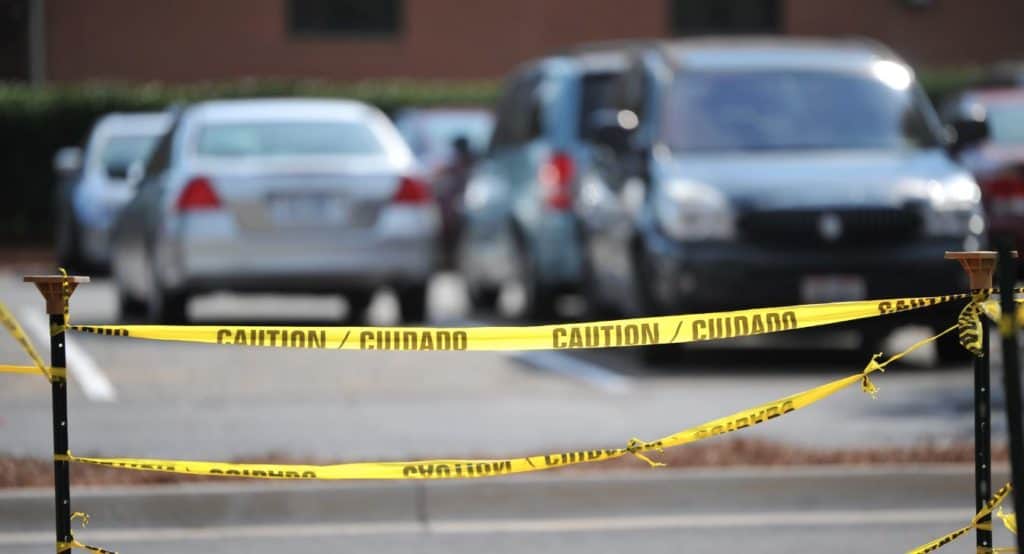
Active Shooter Incidents: Harden targets with hardened minds
Time to instill a school survival mindset.
Hard for educators to hear and harder for them to do; no more “run and hide” priority. Time to focus on reality. Fight and overcome.
In two recent deadly active shooter incidents, civilian heroes overpowered assailants. Two young men sacrificed themselves; others were injured. They didn’t run or hide. They chose to fight. They enabled others to run and survive.
The dominant “lockdown” strategy promoted since Columbine is in question, as is emphasis on the hide part of “Run. Hide. Fight.” To its credit, law enforcement reacted quickly after Columbine and changed the tactical mindset of cops nationwide. Twenty years later, time for schools to do the same.
Our schools, nationwide, are guided by “data-driven instruction.” Educators need to chew on the numbers below.
A peer-reviewed study published in the December 2018 issue of the Journal of School Violence supports “proactive, options-based strategies” over “passive and static” responses like lockdowns. In May, the ALICE Training Institute opined: The Research Is In – Lockdown Alone Is Out. ALICE (Alert Lockdown Inform Counter Evacuate) Training Institute coaches security personnel, educators, law enforcement, companies and individuals. The company does NOT teach fighting, but rather interruptive / distractive techniques as part of its approach. It doesn’t oppose lockdown, it says the strategy doesn’t work in every circumstance. Its data is from 13 different ALICE instructor courses involving a 50-50 split of law enforcement and non-law enforcement participants.
Convincing data
Mobility, pro-activity, and space make a difference:
- In a traditional confined classroom lockdown, it took just over 3 minutes to resolve a threat, with 74 percent of participants shot. In contrast, exercising a “multi-option” approach neutralized the active shooter in only 16 seconds, with only 25 percent of people shot.
- In a traditional lockdown in an open area, it took just under 3 minutes to resolve, with 68 percent of participants shot. The multi-option approach – 8 seconds to resolution with only 11 percent shot.
The study confirms what tactical operators have known all along – and ALICE maintains – one size doesn’t fit all in preparing civilians to thwart active shooter incidents.
A winning mindset
From a practical perspective, we can teach people to run, hide, and how to barricade a door in minutes. Training people how to develop and LIVE a winning, warrior, or survival mindset is more involved, but possible. Initial instruction, practical exercises, refresher training and drills need to emphasize:
- Establish and practice a survival mindset well before an incident
- Have practical conversations, teach visualization, plan
- Right times and circumstances to be pro-active
- Interrupt, disrupt, and fight if necessary
Pundits will scream about teaching “violence.” Nothing is farther from the truth. A survival mindset is no different than the character-building philosophy behind traditional Karate. More about thought and temperament, it teaches restraint, and fighting only when threatened.
Cops, security professionals, and military operators practice a winning mindset when someone resists arrest, they break up a bar fight, or initiate a tactical operation. Positive thought, visualization, and tactical planning are among techniques taught, refreshed, drilled and used. It’s time we passed onto educators that steeling the minds of students, faculty, administrators, and staff BEFORE a threat is paramount.
SOME psychologists argue active shooter training drills in schools needlessly traumatize children. One Indiana sheriff’s office was criticized for shooting teachers with plastic pellets to add realism and illustrate what happens when victims do nothing. Educators argue a focus on the remote chance of an active shooter takes away from more common social and violent issues.
One size doesn’t fit all communities, school districts, police agencies, or even buildings. Methods vary. Some people will be offended. Reality sucks. People avoid reality because it’s difficult to accept, it’s mental and aggressive. You must accept “violence” for survival.
Cops instill a warrior mindset in their spouses and children – you fight for your life – if you can escape a threat, you do. Mobility, distraction, surprise and attack are more effective than doing nothing. Even in hiding, plan your attack.
Some institutions can’t get out of their own way. My junior high school math teacher-wife tells her students they WILL fight if all else fails; but her school only teaches lockdown. Her administrators fear the ubiquitous wooden classroom door wedge – it violates New York State Fire Code – afraid the fire inspector will find one. Outside of dormitory blazes, no student has died in a school fire in nearly 60 years. Even a hastily-placed wedge can thwart entry into a classroom. She keeps this one nearby.
Interaction and cooperation of divergent psychologists, cops, and educators, CAN teach a common sense survival-warrior mindset. Students CAN learn restraint, and how and when to fight at the same time.
We need national active shooter curricula co-authored by first responders and educators that confronts both the realities of active shooter incidents, and survival options for building occupants. It requires educators change gears instead of clinging to the old approach. The time for dialogue has passed. It’s time to make would-be active shooters or any assailant think twice, knowing they will be met with mass active resistance.
Hardening minds is only a part of a solution. It is not THE solution. Old-school first-aid training and progressive planning, like staging medical supplies needed in the aftermath of a shooting, have saved lives. Cameras, metal detectors, alert adult supervision, lockdowns, and lockouts remain sound strategies.
In the worst circumstances, society’s best strategy is people willing and prepared to rise and defend themselves and others BEFORE police can get there.